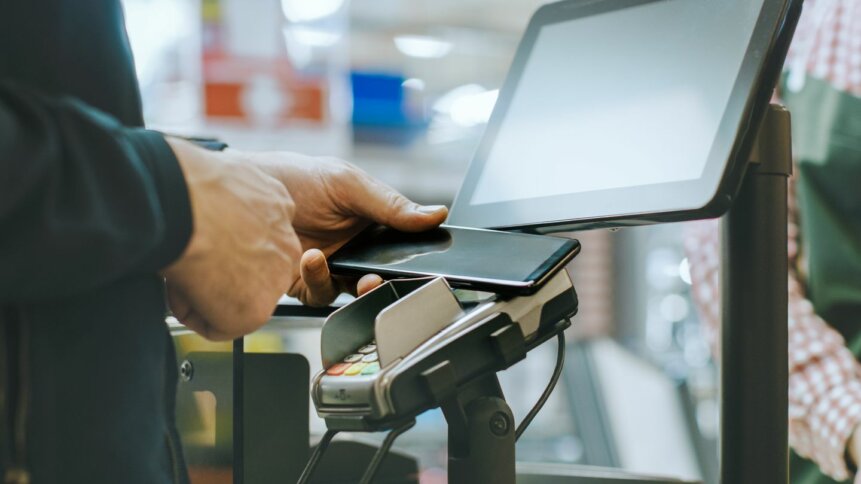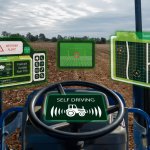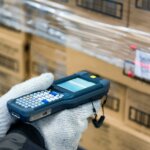From Field To Plate – How the Tech Industry Enables The Food Supply Chain, Part 4

In our long look at the food supply chain and how technology firms are changing everything about how it works, we’ve gone from self-driving tractors and smart greenhouses in Part 1, to revolutionary low-energy mass pasteurization at meat processing plants in Part 2, and to tech-enabled, robot-rich warehousing and route-optimized transportation in Part 3. Now it’s time to look at the final link in the food supply chain – how technology is augmenting and changing the retail food buying experience.
Online Ordering
First, it’s important to understand that in modern supermarket shopping, you need not actually visit a supermarket at all. With online ordering and smartphone apps, many supermarkets operate a home delivery service – and almost half of US grocery shoppers buy at least some of their food shopping online. With bookable delivery slots and potentially tight windows, that means you order online from a near-real-time listing of available food products, which is processed at your chosen supermarket’s nearest warehouse or ‘dark supermarket.’
A dark supermarket is essentially a dummy supermarket, where either human staff or in some cases, robots, will use an AI tool to fill several baskets with people’s orders at the same time. Then, whether at a warehouse or a dark supermarket, your order will be loaded, probably, but not necessarily by human hand, into trucks according to a daily, pre-planned delivery schedule that has probably been calculated by the logistics algorithms of either the grocery store’s local fleet management software, or the fleet management software of a specialized last-mile delivery company.
The truck, whoever it’s owned by, will be branded with the logo of your supermarket of choice, to maintain the idea of a seamless, one-company delivery process. The route planner will maximize the number of deliveries made with the smallest amount of fuel used, to ensure the process is fuel-efficient and minimum-cost.
The driver will then arrive within your delivery window, unload your particular order based on computer instructions of what your order consists of, and where it’s located on their truck, and will get you to electronically sign to say you’ve received your purchases, usually on a small tablet or handheld electronic device. The signature will signify the end of this strand of the food supply chain, and the driver will then continue on their day, closing down other strands according to their daily, electronically-provided, roster.
Meanwhile, if you ordered online through an account or an app, the supermarket’s technology will have contacted your bank, electronically requested funds, been given permission to withdraw them, and sent notifications to update your loyalty account with additional loyalty points, coupons, or other incentives to keep you shopping with your chosen supermarket.
And that’s before you’ve even set foot in your local supermarket.
Bar Coding and Price Updates
Bar coding of products isn’t quite what you might have assumed it was. The bar code simply identifies the object itself, not what it costs, so the fact that when it gets scanned at the register, a price comes up, corresponding to the price on the hoarding underneath the product when you picked it up is the result of a lot of store-side – rather than manufacturer-side – technology.
Each supermarket will have a horde of price strategists, who will do deals with suppliers, increase or decrease the price according to sales, inflation rates, and other factors. And then the information is sent through the store network, to update the price of an item identified by a particular bar code, so that when it’s scanned, the correct price comes up and you’re neither over- not undercharged.
So ubiquitous has bar code scanning become that shoppers rarely think through the implications of the same product, marked with the same bar code on its packaging, potentially weeks before it’s sold, costing a different price in two different supermarkets. There’s some impressive technology behind the trick, and the better trick is to make it seem like it’s a simple fact of life.
Store-Side Warehousing and Stocking
This is by no means universal yet, but some larger supermarkets have now embraced the robotic age for their on-site warehousing and shelf-stacking roles. At the moment, that would not be universally economical, but some larger stores are justifying it by a) reducing overall in-store staffing costs as a result of this form of digital transformation, and b) using the same robots for multiple functions, including warehouse work, shelf-stacking, and janitorial work – potentially saving three staff roles for the price of one robotic system, which is economically efficient, even if it does push the customer experience more and more towards some futuristic Robo-Mart.
Self-Service Registers
Self-service registers are in one sense the ultimate end result of the supermarket ethos. Before supermarkets, customers visited a range of small shops, and never handled the goods they ordered – they would be prepared and handed over by a shopkeeper. The supermarket ethos has always been that the customer does more of the work – wandering aisles, picking up the items of their own choice, etc. Self-service registers merely take that to the next level, theoretically eliminating the need for clerks (though many systems are still easily baffled and need human intervention before a sale can be completed).
The self-service register is really a conglomeration of technologies – bar code scanners, digital weighing scales, a portal to the product index for the store, so scanned items are correctly identified and priced, etc. But they’re gradually becoming a new normal in supermarkets, allowing, for instance, the socially anxious to have a better experience (while admittedly also reducing the opportunity for human interaction in the day for anyone with issues of loneliness).
The self-diagnosing and self-correcting self-service register, powered by AI learning, may be a few years away yet, so the human job role of clerk will not be disappearing any time soon – but fitting technological innovation into the supermarket structure is helping to deliver a faster, more efficient, more supermarket-logical approach to the act of supermarket shopping.
Just Walk Out
Taking that principle of the shopper doing all the work even further, we’re now in the age of “just walk out” shopping. In stores that offer it, the customer takes a handheld scanner along with them as they wander the store. They will need to have signed up online for a shopper account, and they register the scanner to the account for the duration of the trip. Each item they put in their cart, they scan, building up a priced shopping list that corresponds to the contents of their cart.
The way the process is completed has a few variations. Some stores still make you go to a self-service register to pay for your scanned cart of goods, but the evolution of this system is already beginning, and is likely soon to include either tap-and-pay functionality built into the scanners, or even supermarket account payment, where you use an app on your phone and the account to which your shopping is linked is debited automatically. Then… you just walk out.
Cashless Payment
The payment card is hardly new technology, though plenty of people still remember an era when most supermarkets were largely cash-only establishments. But recent innovation has taken the idea of the card payment beyond the need to have physical cards. Apple Pay, Samsung Pay and a whole host of others mean you don’t have to have your actual cards anywhere near you – meaning you’re a lot less likely to lose them at the supermarket – but an app on your phone serves as your payment method because it’s linked to your card details. Lots of stores now have their own bespoke payment apps, too, which not only allow you to pay with your phone, but automatically add the loyalty reward points you earned onto your account too.
Once you’ve left the store, the food supply chain had technically finished its connections. But from farms to processing plants and factories, to warehouses, to supermarkets, to you, the food supply chain continues, day after day. And day after day, tech companies are out there, coming up with new innovations to improve the chain, smooth out the process, and ensure the food supply chain functions at its most economical. What will the chain look like tomorrow?
We’ll tell you later.










